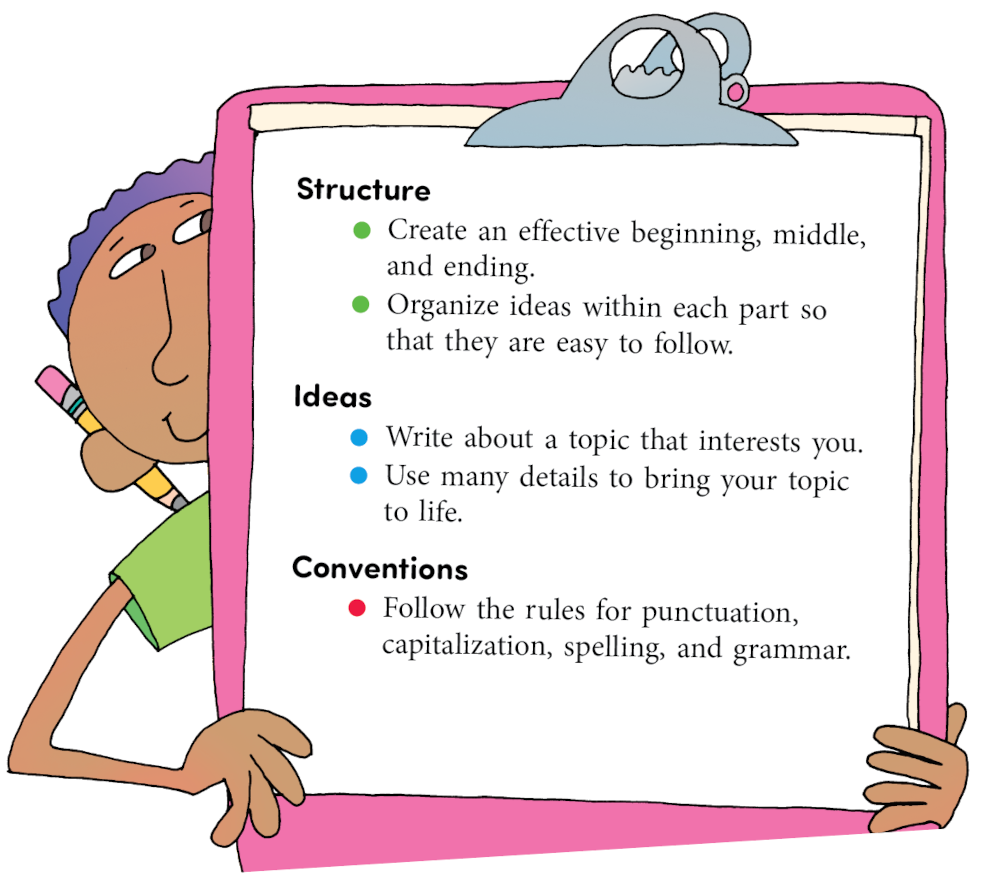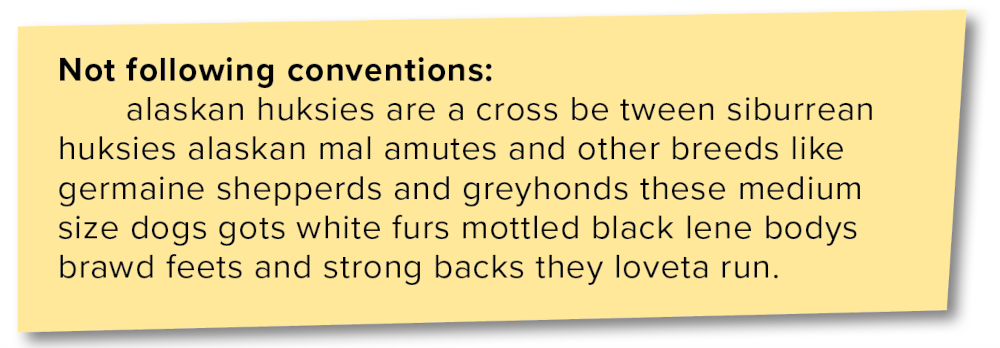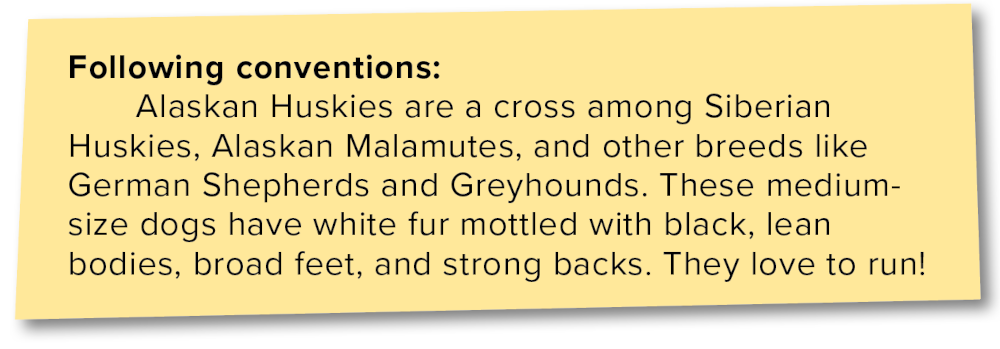WT 018
Page 18
Qualities of Writing
Strong writing has a clear structure, presents interesting ideas, and follows conventions—the rules of language. To create writing with these three qualities, do the following:

WT 019
Page 19
A Closer Look at Structure
When you speak to someone, you start with “hello” and end with “good-bye.” When you write, you need to begin by welcoming the reader and end by wrapping up ideas:
- The beginning introduces the topic of the writing. In a paragraph, the beginning is a topic sentence. In a longer piece of writing, the beginning is a whole paragraph. It focuses readers on the big idea.
- The middle part provides details about the topic. Sentences or paragraphs in the middle include main points as well as facts, examples, definitions, descriptions, sensory details, and so on.
- The ending helps the reader take away key ideas. The ending restates the focus and gives a final thought about it. A short piece of writing has a closing sentence, while a longer piece has a closing paragraph.
Organizing the Writing
An organized kitchen has ice cream in the freezer, bowls in the cupboard, and spoons in a drawer—everything where you need it. In the same way, you should organize your writing so readers can find what they need. Here are two common patterns of organization. (Also see pages 61–63.)
Time Order 🟪 This pattern helps you explain how to do something or how something happens. Use linking words like first, second, then, and next to show time order.
Importance 🟪 This pattern organizes reasons in an argument. Use linking words like first of all, also, and most important with this pattern.
WT 020
Page 20
A Closer Look at Ideas
Every piece of writing needs a topic—the person, place, event, or idea that the writing focuses on. The writing also needs many smaller ideas that support the topic.
- The topic is the big idea in your writing. Choose an interesting topic that fits your writing assignment.
Topic: Dog sled ride
- Details tell about your topic. Include many different details to make your writing interesting and fun to read.
Detail: Eight dogs barked along the tow line.
Detail: Mom nestled in the sled and I stood next, with the musher behind. . . .
Sharing Your Ideas
Strong sentences and specific words help you share ideas.
Strong Sentences 🟪 Write sentences of different types and beginnings, packed with exciting information about the topic.

Specific Words 🟪 Choose words to make your ideas clear.
General words: Dogs eat the snow.
Specific words: As they run, dogs bite snow, or “dip,” to cool down and rehydrate.
WT 021
Page 21
A Closer Look at Conventions
The conventions are the rules for punctuation, capitalization, spelling, and grammar. Writing that does not follow the rules is very hard to read.

The same writing appears below, but with correct punctuation, capitalization, and spelling. Writing that follows the rules of language communicates clearly.

Quick Guide to Conventions
|
Basic Sentences Subject-Verb Agreement Punctuation Capitalization Spelling |